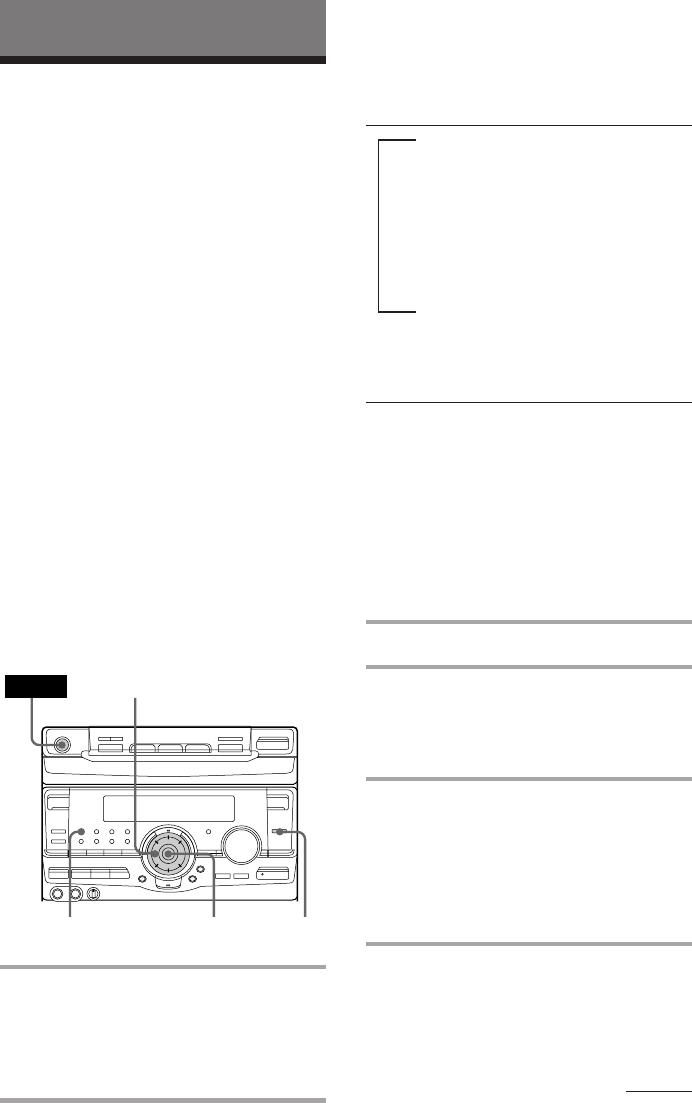
37
·∏
§
π
0)
POWER
Other Features
Using the Radio Data
System (RDS)
(For Western European model only)
To check the RDS information
Each time you press DISPLAY/DEMO, the
display changes as follows:
n Station name*
µ
Frequency
µ
Programme type*
µ
Clock display
µ
Effect (P FILE) name or
“EFFECT ON (OFF)”
* If the RDS broadcast is not received, the station
name and programme type may not appear in the
display
Locating a station by
programme type (PTY)
You can locate a station you want by selecting
a programme type. The unit tunes in the type
of programmes currently being broadcast
from the RDS stations stored in the tuner’s
preset memory.
1 Press PTY
2 Turn jog dial to select the
programme type you want. See the
“List of programme types” section
below.
3 Press ENTER/NEXT.
The unit starts searching the preset RDS
stations (“ Search” and the selected
programme type are displayed
alternately).
When the tuner receives a programme,
the preset station number flashes.
4 Turn jog dial to display the preset
station number you desire.
continued
What is the Radio Data
System?
Radio Data System (RDS) is a broadcasting
service that allows radio stations to send
additional information along with the regular
programme signal. This tuner offers
convenient RDS features like station name
display and location of stations by
programme type. RDS is available only on
FM stations.*
Note
RDS may not work properly if the station you are
tuned to is not transmitting the RDS signal properly
or if the signal strength is weak.
* Not all FM stations provide RDS service, nor do
they provide the same type of services. If you are
not familiar with the RDS system, check with your
local radio stations for details on RDS services in
your area.
Receiving RDS broadcasts
/ Simply select a station from the FM
band.
When you tune in a station that
provides RDS services, the station
name appears in the display.
1
2,4
3,5
DISPLAY/DEMO


















